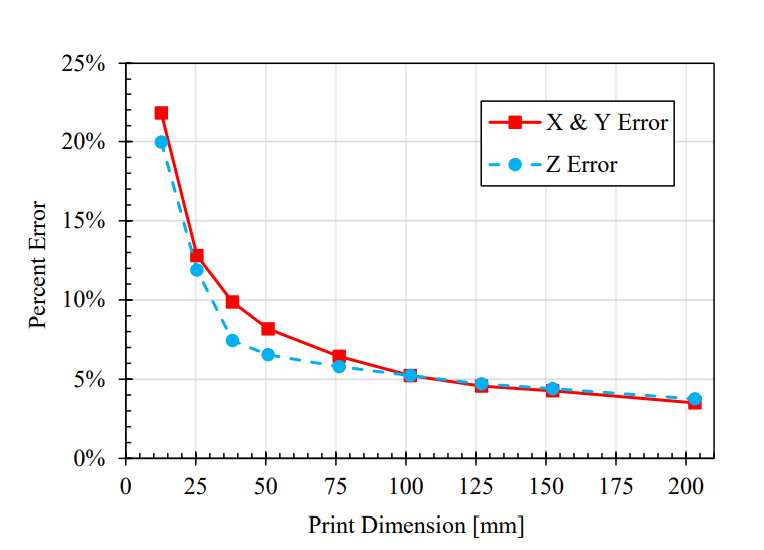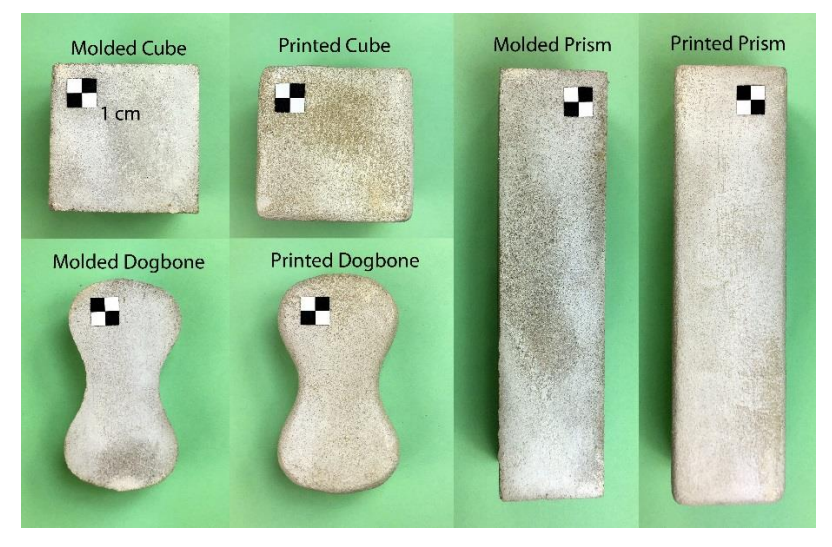 In ‘Material Characteristics of Binder Jet 3D Printed Hydrated CSA Cement and Fine Aggregates,’ structural engineering thesis student Joseph Ingaglio (Lehigh University in Bethlehem, PA) explores the potential of making 3D printing in construction a reality rather than a challenging concept.
In ‘Material Characteristics of Binder Jet 3D Printed Hydrated CSA Cement and Fine Aggregates,’ structural engineering thesis student Joseph Ingaglio (Lehigh University in Bethlehem, PA) explores the potential of making 3D printing in construction a reality rather than a challenging concept.
In reaching for the goal of creating improved methods in additive manufacturing and improved resolution over previous FDM and other extrusion methods, Ingaglio chose to use binder jet technology, refining issues with mechanical properties and retained structural integrity in more complex geometries. In exploring the history of FDM 3D printing, Ingaglio explains that larger structures being fabricated without the need for as much accuracy and surface quality are better candidates with that more traditional brand of 3D printing. Of course, 3D printing pioneer Enrico Dini has already been using binder jetting for years with his company Dshape. Much research and attention in 3D printing buildings have gone to FDM or FDM-like methods however and next to nothing on alternative approaches. All of which makes this paper a welcome addition to the canon of 3D printing buildings. Ingaglio himself seems resolutely opposed to the mainstream FDM methods of 3D printing.
“However, concrete FDM is not suitable when complex geometries, refined topologies, lightweight components and architectural details, the most appealing aspects of architectural and structural 3D printing, are desired,” states Ingaglio.
To make up for the stated inferiorities Ingaglio found in FMD 3D printing, he created a new method featuring water-based cement that could be sprayed into dry concrete powder combined with a ‘fine round grain silica aggregate.’ The researcher states that with this new method, more complex components can be engineered, and they are reinforced with full support due to the presence of the powder.
Liquid binder printing relies on hydration for better binding of the materials, but it must happen quickly so that the following occurs:
- Prevention of ‘bleeding’ of excess water
- Preservation of shape during 3D printing
- Production of strong materials that can be easily removed from the print bed
In his research, Ingaglio used a ZCorp 310+ printer, with disposable HP10 piezoelectric ink print heads. The author points out that this print head offers the desired precision at a resolution of up to 300 x 450 dpi. He used a liquid binder featuring a water base, in line with cement compatibility.
“This binder was extensively tested with multiple types of cement, beyond CSA, and was found compatible with all the tested cement types,” states Ingaglio.
The dry powder combination contained both CSA cement and silica sand, which the author blended by hand before pouring into the print bed. He also states that the water to cement ratio was low in comparison to more typical mixed cement:
“The water to cement (w/c) ratio was designed to be 0.293 (Mix A) and 0.373 (Mix B), but due to the 2.3% absorption and 0.1% moisture content of the sand, the w/c ratio in hydration is reduced to 0.221 and 0.301, respectively,” states Ingaglio. “The actual w/c ratio may be lower, because this study did not account for water loss due to bleeding into the surrounding particles or evaporation.”
The researcher was able to create control samples after combining cement, water, and both aggregate and forming materials, compressed into molds, manually. Ingaglio cured them for 24 hours before weighing, measuring, and washing them.
“Due to the fast-acting nature of the CSA cement (without retarders), molded control samples were difficult to pack and had to be completed in matter of minutes,” states Ingaglio. “In addition, the relative dryness of the mix caused poor workability, and high levels of compaction were not feasible (in the control samples).”
Compression testing was performed in four different trials of:
- 3D printed mix A
- 3D printed mix B
- Molded mix A (conventional control)
- Molded mix B (conventional control)
Samples were then evaluated regarding normal and parallel stress. Tensile testing was performed using AFS Test Procedure 3301-00-S, and for elastic modulus testing, a set of cubes were assessed using an Instron 5500 testing machine. Results showed that most samples demonstrated less density and higher void than those created through conventional methods, with numerous variations indicated in samples depending on combinations of materials and post-printing processes.
“The results indicate that 3D printed hydrated CSA cement objects possess the strength and the resolution need to fully utilize the advantages of additive manufacturing,” concluded Ingaglio. “By virtue of these 3DP methods, the printed CSA cement objects can be printed with more detail, higher resolution, and more geometric freedom than current FDM concrete printing. The benefit of utilizing a cement-based material, is that compatibility of applications it possess and how easily it can be integrated with conventional construction materials in the construction industry.”
3D printing offers a long list of benefits to businesses, artists, consumers, and users around the world; however, a handful of advantages tend to draw major industry titans toward implementing such technology in manufacturing processes today due to affordability, speed in production, the ability to cut out the middleman, reduce labor, and create parts on both the small and large scale that may not have been possible previously. This all certainly applies to construction, evidenced by the growing number of stories we follow, and especially in the use of 3D printed concrete—from delving into infrastructure issues like building bridges to constructing military barracks or assessing material usage for innovative, lightweight structures. Find out more about the use of binder jet technology in 3D printing and construction here.
What do you think of this news? Let us know your thoughts! Join the discussion of this and other 3D printing topics at 3DPrintBoard.com.
[Source / Images: Material Characteristics of Binder Jet 3D Printed Hydrated CSA Cement and Fine Aggregates]Subscribe to Our Email Newsletter
Stay up-to-date on all the latest news from the 3D printing industry and receive information and offers from third party vendors.
You May Also Like
Profiling a Construction 3D Printing Pioneer: US Army Corps of Engineers’ Megan Kreiger
The world of construction 3D printing is still so new that the true experts can probably be counted on two hands. Among them is Megan Kreiger, Portfolio Manager of Additive...
US Army Corps of Engineers Taps Lincoln Electric & Eaton for Largest 3D Printed US Civil Works Part
The Soo Locks sit on the US-Canadian border, enabling maritime travel between Lake Superior and Lake Huron, from which ships can reach the rest of the Great Lakes. Crafts carrying...
Construction 3D Printing CEO Reflects on Being Female in Construction
Natalie Wadley, CEO of ChangeMaker3D, could hear the words of her daughter sitting next to her resounding in her head. “Mum, MUM, you’ve won!” Wadley had just won the prestigious...
1Print to Commercialize 3D Printed Coastal Resilience Solutions
1Print, a company that specializes in deploying additive construction (AC) for infrastructure projects, has entered an agreement with the University of Miami (UM) to accelerate commercialization of the SEAHIVE shoreline...

































